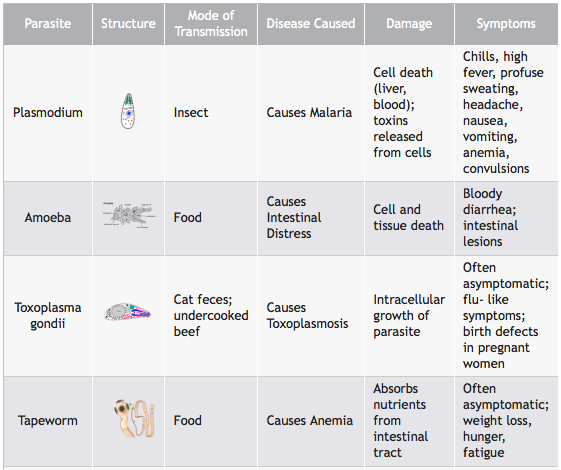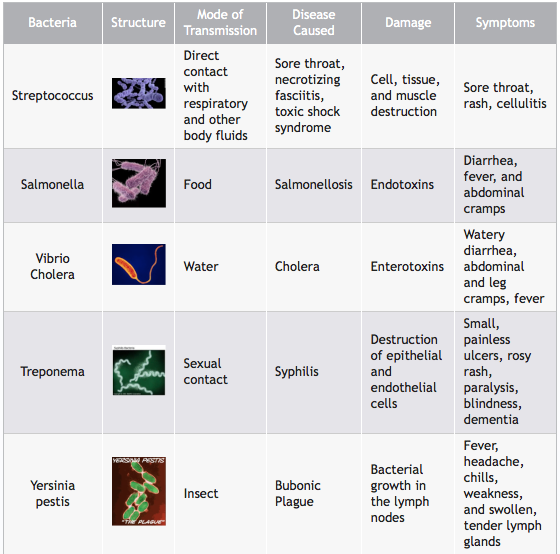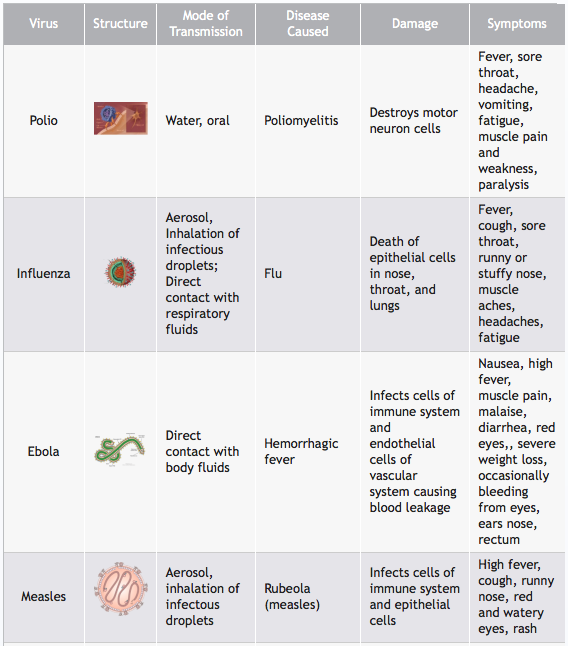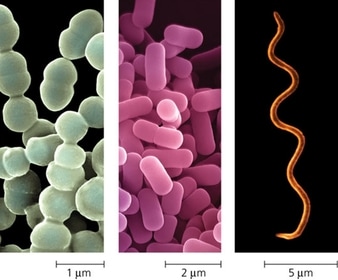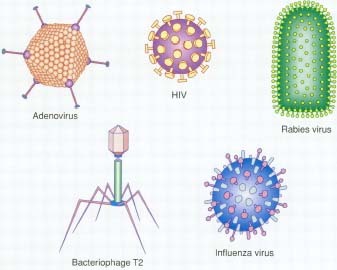Defining "Disease"
Scientists have a really hard time defining disease. Like with "species", we just kind of know it when we see it. Diseases are typically thought of as malfunctions in the normal processes of the human body. We know that cancer is a disease and so is diabetes. The flu is a disease, as is ebola, measles, and chicken pox. But overtime some of opinions about diseases have changed. Sometimes diseases are defined by their causes (such as measles) while other times diseases are defined by their symptoms (such as Chrons disease) Is osteoporosis (weakening of bones) a disease or is it simply the result of old age? If you get osteoporosis when you are 80 is it not a disease but it is a disease if you get it when you are 30? What about ADHD? Is ADHD a disease or a disability? We can treat ADHD with medication, but does that matter? What about mental illness? We currently think of anorexia as a disease, but why?
In this unit we are not going to worry about how we define disease. We are going to discuss characteristics of disease and the causes of disease. Specifically, we will be focusing on infectious diseases.
In this unit we are not going to worry about how we define disease. We are going to discuss characteristics of disease and the causes of disease. Specifically, we will be focusing on infectious diseases.
Infectious vs. Non-infectious
Some diseases can be "caught" while others you are born with, or they develop over time. Infectious diseases are those that can be spread from one person to another. Examples include the flu, a cold, HIV, and ebola. Non-infectious diseases cannot be passed from one person to the next. Things like cystic fibrosis, diabetes, and heart disease, are non-infectious diseases. Infectious diseases are often caused by microorganisms or viruses.
Agents of Disease
|
Parasites
Parasites are everywhere. There are far more kinds of parasitic than nonparasitic organisms in the world, and organisms that are not parasites are usually hosts, harboring parasites within and upon them. Their diversity in size, complexity, and life cycles is truly astonishing, ranging from single-celled amoebas responsible for diarrheal distress to the multicellular tapeworms that can grow to 20 feet in humans and 100 feet in whales. Parasites can be transmitted in a variety of ways: in contaminated food or drinking water, by swimming in lakes and rivers, or in the feces or saliva of an insect or other animal. A parasite may harm its host in any number of ways: by mechanical injury, such as boring a hole in it; by eating or digesting and absorbing its tissues; by poisoning the host with toxic metabolic products; or simply by robbing the host of necessary nutrients. |
|
Bacteria
Structurally the simplest of life forms, bacteria are single-celled prokaryotic organisms. Although capable of carrying out all of the cellular life functions, bacteria lack the internal structures, such as a nucleus and mitochondria, found in eukaryotic cells. Their genetic information is found on a single chromosome within the cell. Bacteria can be found just about anywhere—in the saltiest sea, in the hottest hot spring, and in the most acidic or alkaline conditions. They make the soil fertile: there are about 200–550 lbs of bacteria for every acre of soil. Bacteria decompose dead organic matter, help plants get nitrogen from the air, help humans make vitamins and fend off undesirable microbes. Most mammals are walking apartment complexes for a wide variety of bacteria, some of which are essential to the well-being of the animal, but most of which are just along for the ride. Bacteria make up about 10% of the dry weight of a human; that is, a 150-lb. person comprises about 4 lbs. of bacteria. |
|
Because bacteria have limited ways of moving, many of them rely on carriers or vectors to deliver them to their host. Blood sucking and biting insects, such as mosquitoes, ticks, and fleas, transmit a wide variety of pathogenic bacteria. Fecal material (poop) from birds, rodents, cats, and other animals can transfer bacteria if it is eaten. Eating of contaminated food and water and direct contact with infected body fluids are a source of many serious bacterial infections.
Antibiotics are chemical compounds that either kill or inhibit the growth of bacteria. Certain antibiotics act by interfering with the formation of the cell wall. Because animal cells do not have cell walls, antibiotics affect only the infecting bacteria. |
|
|
Viruses
A virus is not a cell. It cannot maintain the characteristics of life on its own. Unlike cells, viruses cannot perform biochemical processes such as cellular respiration or biosynthesis. Viruses also lack the structural components (cellular machinery) cells that allow cells to carry out the life processes—they have, no nuclei, no mitochondria, they cannot reproduce, metabolize, or conduct any of the basic processes of life on their own. A virus cannot replicate outside a cell. Viruses can infect cells in every kind of organism, including bacteria, plants, fungi, and animals. A specific type of virus will infect only certain organisms and only certain kinds of cells within that organism. Much smaller than any cell, a typical virus is made of a protein “coat” surrounding its genetic material (DNA or RNA). This genetic material contains specific instructions for making the proteins and nucleic acid the virus needs to reproduce identical copies of itself. A virus enters the cell and takes over the cellular protein synthesis machinery, forcing the cell to make the proteins it needs for the virus to reproduce. The virus utilizes the building blocks and energy stored that the cell has generated for its own growth and reproduction. |
|
The infected cell is depleted of the materials and energy it needs to repair the damage. As a result, the cell often dies from this invasion. A virus may exit a cell by simply blowing up the cell or by budding from the cell, picking up some host membrane as it exists. The virus can spread throughout the body by traveling in infected cells.
Viruses cannot be killed by antibiotics and no “miracle” drugs have been discovered for the treatment of viruses. While scientists have developed drugs that can block the replication of certain viruses, these drugs do not clear the body of the virus. In most instances, treatment of viral infections involves prevention through the use of vaccines. Vaccines are specific to the virus, allowing the immune system to kill the virus without resulting in a full immune response that makes you feel sick. Not all viruses have a vaccine that works.The most common treatment for viral infections include helping the body to help itself, through the restorative powers of sleep, drinking plenty of fluids, and consuming vast quantities of chicken soup. |
|
Adapted from: http://infectiousdiseases.edc.org/content/module/1/reading/2?view=teacher
What makes us feel sick?
|
Bacteria and viruses themselves don't cause death, but we die because of the effects of bacteria and viruses on our body systems.
Bacteria make us sick by releasing toxins. These toxins interfere with how our bodies work. Severe dehydration can occur from toxins that mess up the cells ability to control osmosis. Other toxins, such as those released by the bacteria that causes the Bubonic Plague, directly kill your bodies immune system cells. Viruses make us feel sick by activating our own immune system. When our immune system responds to a virus it raises our temperature, making us have a fever, it also sends lots of different cells to the infected area. These cells then cause other responses such as swelling, redness, increased blood flow, and pain. Viruses can kill the cells they infect, which can be irritating to our bodies. But most of the time, virus symptoms are caused by our own bodies immune response. |
The three shapes of bacteria.
Virus shapes.
|
Cholera - a bacteria
There are an estimated 3–5 million cases of cholera, a disease caused by the bacteria Vibrio cholera, each year. It is passed on through drinking water that has been contaminated with faeces from someone infected with the bacteria. Cholera causes vomiting and diarrhoea, leading to severe dehydration.
|
The cholera bacteria produce a toxin that is made of six proteins. The cholera toxin binds to protein receptors in the cell membrane of intestinal cells. The toxin activates a messenger molecule that causes ion channels in the cell membrane to open. As a result, ions, such as salt, are pumped out of the cell, into the intestine. This disrupts the cell's ability to control water. Due to osmosis, water leaves the cell, following the ions, into the intestine. The cells lose a lot of water, which causes severe dehydration, and the increased water in the small intestine causes watery diarrhoea and vomiting.
Source: https://bigpictureeducation.com/biology-behind-cholera |
Bacteria release toxins that make us sick. Bacteria live in our bodies but rarely invade our cells.
|
Influenza - a virus
Influenza, the virus that causes the flu, infects the respiratory system of its host. When you breathe in the influenza virus, the virus infects the cells in your lungs and respiratory tract. The influenza virus takes over the host cell machinery to make copies of itself. When there are enough copies they explode out of the cell, causing the cell to die. In this way, the influenza virus directly kills cells in your lungs.
|
The virus, while inside the cell, also causes the infected cell to release a chemical that causes you to feel headaches, fever, and general tiredness. However, the influenza also triggers your immune system to respond. The immune system is responsible for causing many of the symptoms you feel when you are sick with the flu. Your immune system is what gives you a fever when you have an infection. By raising your temperature your body is trying to kill off the bacteria or virus that is infecting you. This is why you often get a fever when you have an infection, regardless of if the infection is caused by ebola, influenza, rhinovirus, or a bacteria. Heat, swelling, redness, and pain are results of the immune systems response to an infection.
|
Viruses infect our cells. Our immune system responds which causes us to feel sick.
|
Some diseases kill us, but others don't.Diseases have different modes of transmission. The mode of transmission is just a fancy way of saying that diseases are spread in different ways. Some diseases are spread through direct contact with a person's mucus, saliva, blood, or other bodily fluids. Other diseases are spread through infected water, feces, or through other organisms such as insects or rats.
If a disease is spread only through direct contact then it is more likely that the symptoms it causes will not be so bad that you cannot leave your house. The virus or bacteria will only be able to spread to other people if you directly infect them. This means that the disease needs you to be up, moving around, out of your house, in order for it to spread. If the disease makes you so sick that you stay inside, in bed, it is likely that you will not spread the disease. Likewise, if the disease kills you before it has spread then it will also die. This is why diseases spread by direct contact either don't make you very sick or they don't kill you for a long time. The disease needs to spread. |
|
Diseases that are highly contagious and often fatal are much more likely to have reservoirs and carriers. Reservoirs and carriers are places where the disease can "live" for long periods of time while they wait to come in contact with a host. Reservoirs can include water and soil. Carriers often include insects, rodents, and parasites such as ticks and fleas. These diseases can be spread through indirect contact such as someone sneezing on a letter that is then mailed to an office where the disease is spread to other people. Likewise, a disease that can live in soil or water can be spread from town to town along a stream/river. Diseases spread by insects simply need a way for the insect to bite you and then move on to bite another, unsuspecting person. These diseases can make you very ill because the sicker you are the more likely you are to expel the disease into the environment, allowing it to spread.
|
|
|
Proudly powered by Weebly
